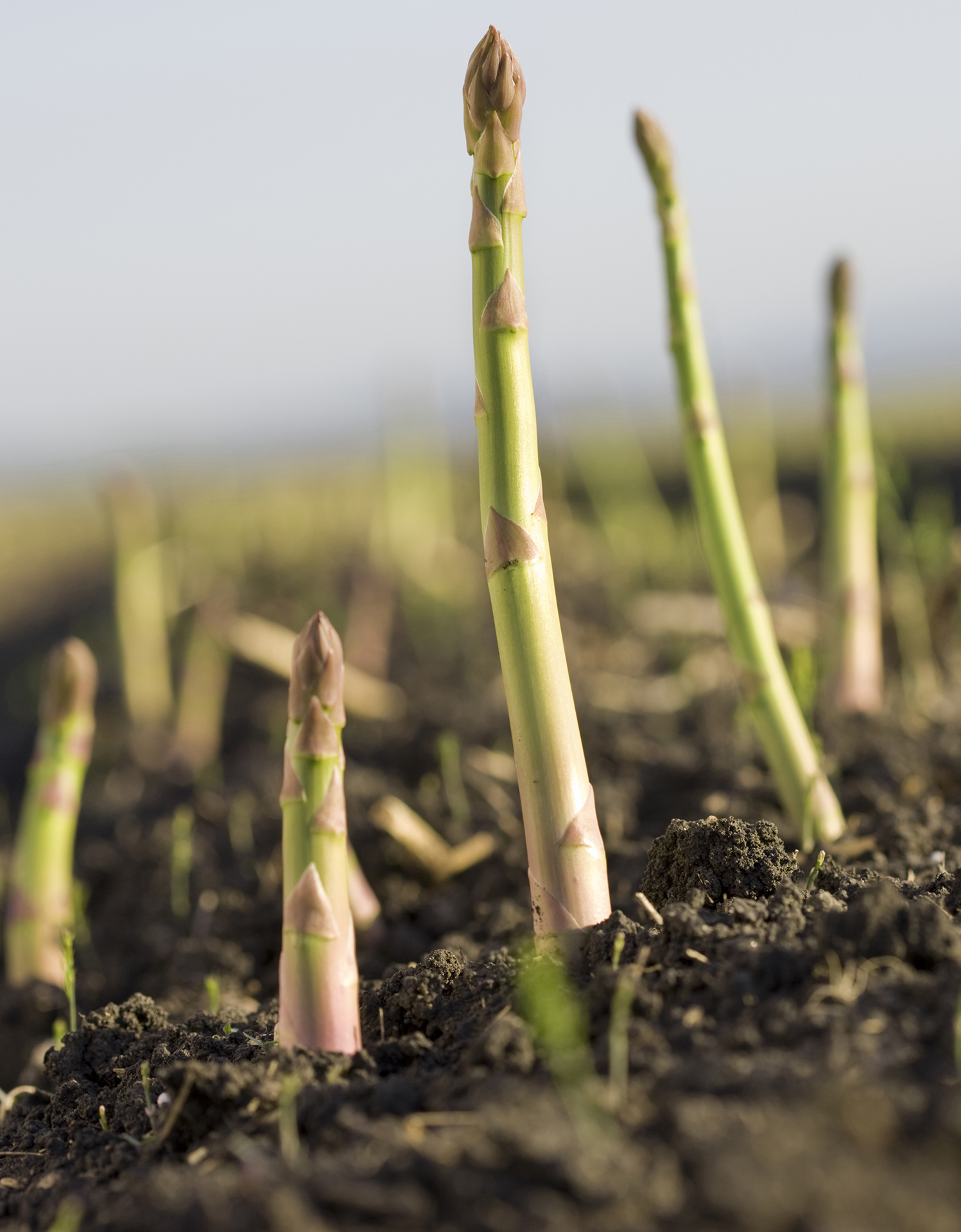When to plant asparagus – the vitamin rich superfood
Learn when to plant asparagus to maximize growing success at home of this tasty, prized crop


It's important to learn when to plant asparagus to get it off to a good start, particularly as asparagus is not your typical one-hit vegetable.
When growing carrots we eat the roots and with potatoes we eat the tubers, but like rhubarb, asparagus – Asparagus officinalis – is a perennial plant from which we harvest the stems or ‘spears’. This is done annually during a short spring to early summer window, and only builds to substantial harvest quantities by the third and fourth years.
Patience is the name of the game when learning how to grow asparagus – and if you'll be dedicating an area of your vegetable garden to this perennial crop then it's important to get it right by planting asparagus at the correct time.
You'll reap the rewards of timing it right as it's expensive to buy asparagus at the grocery store, but a well-planned asparagus bed can go on to produce delicious spears in high volume for twenty years or more.

When to plant asparagus – spring
If you're wondering when to plant asparagus, it is typically in early spring when the danger of frequent frosts have begun to pass and drier weather is more regular than prolonged spells of heavy rain or snow.
Asparagus can be grown from seed but this adds an extra year to the overall growth cycle. Instead, most asparagus growers begin by planting bare-root crowns. These brown dried root systems, which resemble bundles of small octopus tentacles, are in fact dormant one-year-old plants.

What month is best to plant asparagus?
The best month for when to plant asparagus crowns in Europe and the United States is generally in late March or April. US growers in USDA zones 1 to 5, however, tend to wait until late April or even mid-May.
Design expertise in your inbox – from inspiring decorating ideas and beautiful celebrity homes to practical gardening advice and shopping round-ups.
Indeed there are specific varieties of asparagus bred for growers in colder northern states. Asparagus ‘Millennium’ was bred in Ontario at Canada’s University of Guelph and is more suited to colder climes because it goes dormant earlier in the fall and emerges later in spring, offering increased protection from frost damage.
Daniel Yoder, asparagus trial technician at Johnny’s Selected Seeds is based in a USDA zone 3-6 and highlights that healthy crowns need to be planted after the danger of frost has passed. 'On our Research Farm in Maine, we would plant crowns with all our first spring crops in mid-May. However, I wouldn’t plant until mid-June when it comes to seedlings,' he explains.

Can you plant asparagus in fall?
It is traditional to plant asparagus crowns in the spring but some varieties do lend themselves to fall planting. This should be done during the early months of the season, while the soil is still warm from the heat of summer. This gives the roots time to wake up a little as they become accustomed to their new home prior to the arrival of winter temperatures.
'Asparagus crowns can also be planted in the fall when the soil is warmer. This gives plants a head start on establishing. We recommend asparagus ‘Mondeo’, an all-male hybrid that crops early, produces high yields and has good disease resistance,' explains Annalise Brilli, horticultural expert at UK seed supplier Thompson & Morgan.
To further help the yield of your asparagus crops, you can look at companion planting beneficial crops alongside them to protect them from pests and attract pollinators.

When can you buy asparagus crowns for planting?
Asparagus crowns can be purchased online, directly from garden centers or from nurseries and are generally available from mid-March into April for planting in spring.
It is very common for growers to make pre-order purchases online in the early months of the year to ensure that stocks are still available in April. It is well worth shopping around for the best prices because there can be quite a variance on price.
Plant asparagus in full sun, and fertile, well-drained soil. The need to avoid constantly wet or boggy conditions cannot be overstated – asparagus crowns do not grow well if they are planted in wet beds.

When can you replant existing asparagus plants?
Existing asparagus can be transplanted or replanted in early spring while crowns remain dormant, although transplanting or replanting is generally not recommended due to ‘transplant shock’.
Once lifted and relocated, they should be left unharvested for a further two years whilst they re-establish themselves.

Keen gardener and gardening writer Matt Peskett tends two allotments: one for veg, on chalk soil, and one for fruit, on clay, as well as his sandy, terraced hillside garden, where he focuses on drought tolerant plants, bulbs and pot displays.